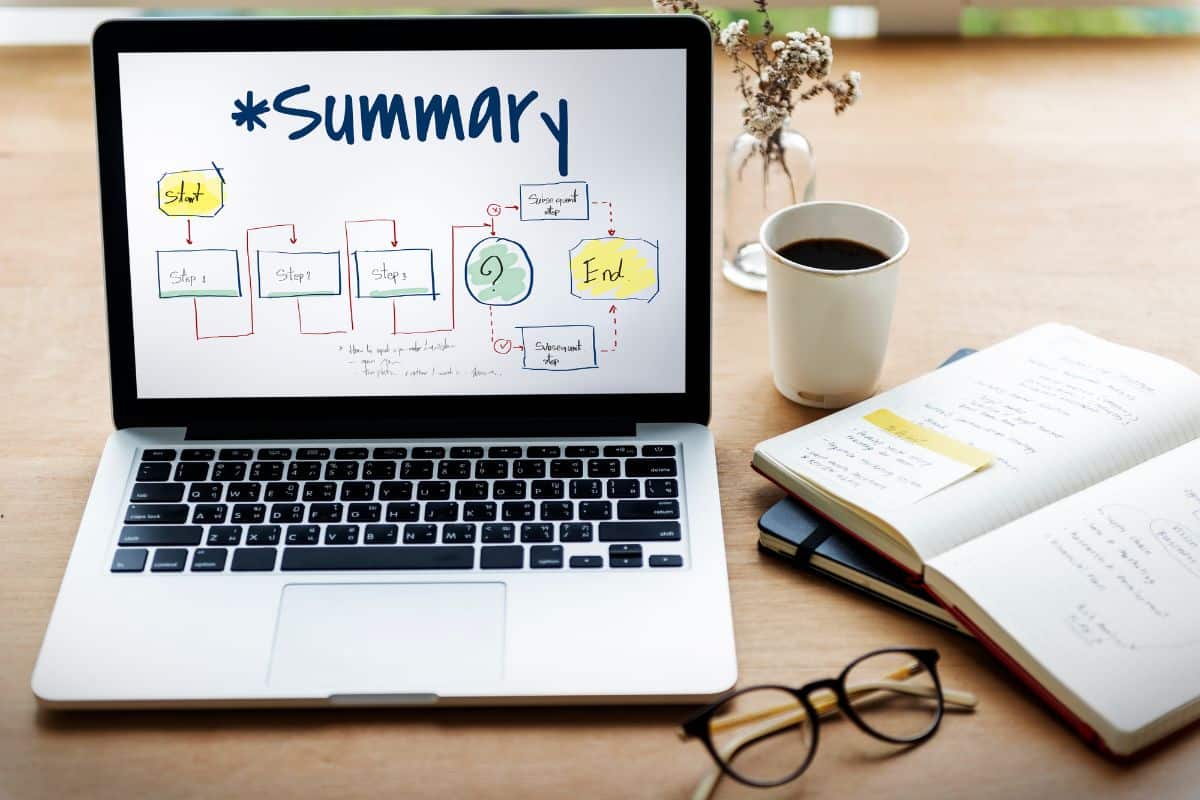You’ve just finished reading a lengthy research paper for class, or maybe you’re prepping for a team meeting where you’re expected to explain a dense industry report in five minutes flat.
The challenge now is summarizing all that complex info without watering it down and losing your mind halfway.
And as you’re trying to distill all those details into something short, you’re even going to question yourself: What is a summary?
The truth is, most people aren’t bad at writing summaries. They just haven’t been taught how to read with summarizing in mind.
This blog will show you how to spot what matters, ignore what doesn’t, and write a summary that makes sense without sounding like a copy-paste job.
Key Takeaways
- A summary is the essence of a text, written in your own words and stripped of everything non-essential.
- Good summaries come from knowing what to keep, what to cut, and how to explain it clearly.
- Different situations call for different types of summaries.
- With tools like Undetectable AI’s Ask AI and Paraphraser, you don’t have to figure it all out alone.
- They help you simplify, reword, and clarify any content.
What Is a Summary?
A summary is a short version of a longer text that captures only the most important points.
Instead of copying everything word for word, a summary explains what the original is about in a much shorter form using your own words.
Consider it as the essence of the original. It’s meant to deliver the core message of a text without the extras.
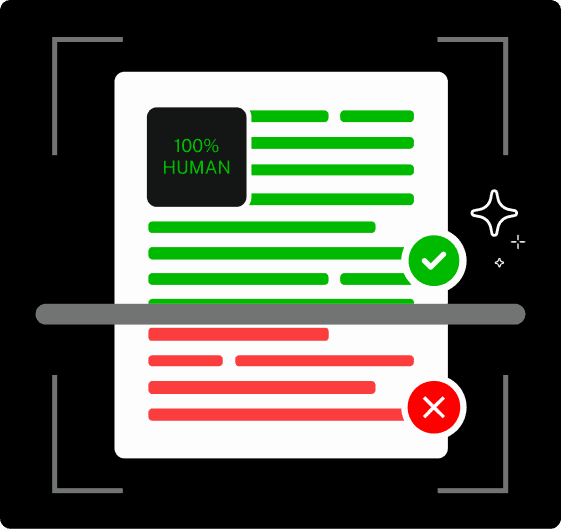
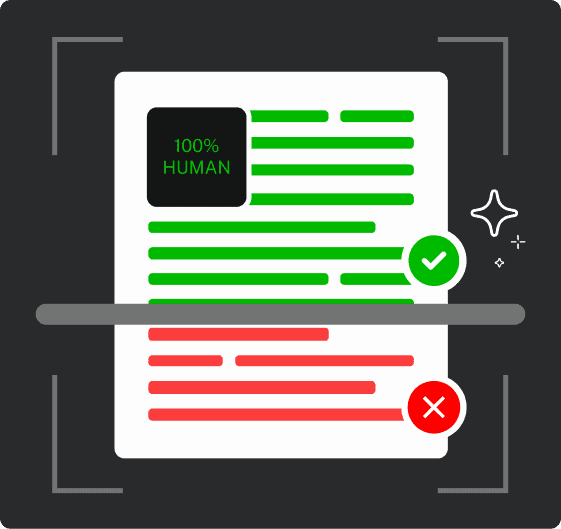
Never Worry About AI Detecting Your Texts Again. Undetectable AI Can Help You:
- Make your AI assisted writing appear human-like.
- Bypass all major AI detection tools with just one click.
- Use AI safely and confidently in school and work.
Summaries are useful everywhere, and when done right, a summary saves the reader time while still giving them the full picture.
Key Characteristics of a Good Summary
A well-written summary has a few qualities:
- Brief: It is a shorter version of the original text.
- Objective: It sticks to what the original says without interpretation, bias, or analysis.
- Clear: It’s easy to read and understand, even if the original material was complex.
- Original Wording: It uses your own words, not direct copies from the source, to avoid all types of plagiarism.
Types of Summaries

The summary definition above doesn’t quite capture it all because not all summaries serve the same purpose.
Depending on where and how they’re used, summaries have different forms.
Some just explain, while others analyze or persuade. Here are the main types you’ll come across:
Descriptive vs. Evaluative Summaries
Descriptive summaries simply explain what the original text says.
They tell the reader what is covered, without making any judgments.
On the other hand, evaluative summaries still explain the content, but also include some brief critique or opinion, usually to help a reader decide if it’s worth reading the full text.
Abstracts vs. Summaries
Abstracts are most often used in academic and scientific writing.
They give a brief overview of the entire study or paper, including the aim, method, results, and conclusion. Abstracts are usually very structured.
Summaries, on the other hand, might focus on the overall message or main argument, without digging deep into the structure or method.
A summary may not be limited to academic work, as it can apply to books, emails, or meetings.
Executive Summaries in Business
An executive summary is written for decision-makers who don’t have time to read a full report.
It covers the purpose of the report, the key findings, and any recommendations.
It’s actionable and often the first (and only) part of the document some people will read.
Academic Summaries in Research and Essays
In schools and universities, summaries are used to show that you’ve understood a source.
These are usually objective, neutral, and written in your own words, without inserting your opinion.
Academic summaries are common in literature reviews and take-home assignments.
Literary and Book Summaries
Literary summaries are used to explain the plot, characters, and themes of a novel, short story, or play.
They’re helpful for students studying literature, book reviews, or even readers deciding whether to pick up a book.
Technical Summaries and Reports
Technical summaries are found in industries like engineering, software, and product development.
They condense complex information into clear, digestible insights for clients, teams, or stakeholders.
Elements of an Effective Summary
A weak summary might just be a chopped-up version of the original.
How to avoid writing such a summary?
Before I teach you how to write a summary, let’s discuss the five elements that make a summary effective:
1. Main Ideas
A good summary captures only the core message, i.e., the main argument, purpose, or takeaway.
Everything else builds around this.
If a reader walks away remembering just one thing, it should be this.
2. Supporting Details
Once you’ve got the main idea down, include only the most important supporting points.
You don’t need every example or stat, just a few key details that help explain or back up the main message.
3. Independence
Your summary should make sense on its own, even if the reader never saw the original.
Avoid vague phrases like “this point” or “as mentioned earlier.”
Write it as if you are explaining it to someone completely new to the topic.
4. Conciseness
Summaries should be short, but that doesn’t mean rushed.
It means choosing your words carefully and skipping anything that’s not essential. Say more with less.
5. Structure
A summary should be organized and logical. It must not look like a random list of ideas.
Start with the main idea, follow with the supporting points, and end properly.
Even if your summary is just a few lines, a good structure will make it easy to read.
I’ve seen students struggle with summarizing academic texts. Not anymore. You can skip the manual effort and try out Undetectable AI’s Ask AI.
This tool helps students generate humanlike answers and summaries for school projects.

Also, to ensure your final draft is both professional and easy to digest, you can use Undetectable AI’s AI Essay Rewriter to help you rewrite and polish summaries.
This tool specializes in trimming unnecessary fluff while emphasizing your main arguments, ensuring the result is concise, accurate, and original.
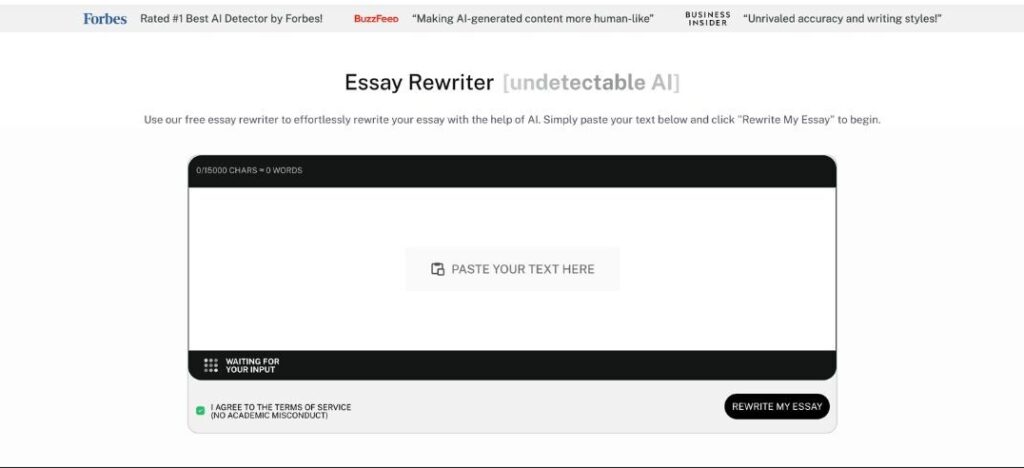
How to Write a Summary
Having known what is a summary and its elements, now let’s show you how to write one.
A good summary doesn’t happen by just trimming a few lines off the top.
It takes a bit of thought, but if you break it into steps, it’s a lot more doable than it seems.
Step 1: Read and Actually Understand What You’re Summarizing
Sounds obvious, but most people try to summarize before they fully get the material. Read it once.
Then read it again, slower.
If there’s jargon or complex ideas, try explaining them out loud, or better yet, drop the text into the AI Chat tool by Undetectable AI and ask it to explain things in simple language.
I asked it to simplify the following for someone outside the marketing world:
‘Our content strategy leverages an omnichannel approach to maximize touchpoint consistency and drive brand resonance across segmented audiences.’
This is what I got:

Brilliant, right?
Step 2: Find the Main Point
What’s this thing really about?
What’s the takeaway?
Once you have that, look for main ideas that support it. Don’t overthink it. If it keeps coming up, it probably matters.
Step 3: Cut the Extras
Now that you’ve found the core, get rid of the rest. Examples, side notes, repeated points, stats you don’t need. They can all go. Your summary isn’t the place for detail.
Step 4: Say It in Your Own Words
This part is non-negotiable. Don’t copy or reword line by line.
Just say what you understood and how you would explain it to someone else. Keep it natural and to the point.
I know what you’re thinking. These steps are helpful, sure, but they don’t really answer the big question:
How to start a summary?
Fair point.
To help with that, I went looking for summaries people have actually written. Here are a few popular ones I found online that show how different summaries start, based on what they are about.
- Movie Summary Example – Inception (2010)
- Novel Summary Example – Pride and Prejudice by Jane Austen
- TED Talk Summary Example – The Danger of a Single Story by Chimamanda Ngozi Adichie
If you get stuck, use our AI Paraphraser to help rephrase things without sounding like a bot.
I used this paraphraser to rewrite the following text:
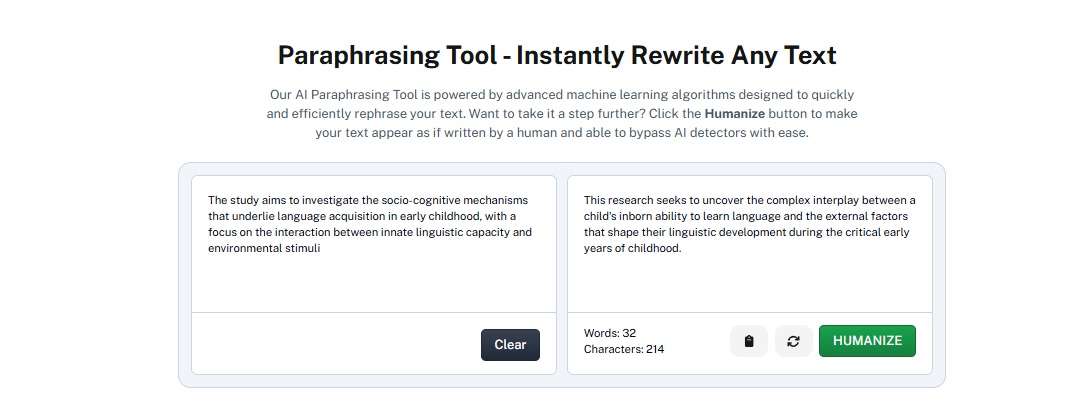
If you’re also stuck trying to rephrase a tricky sentence, our AI Rewording Tool can help you rewrite summaries in your own words without sounding robotic.
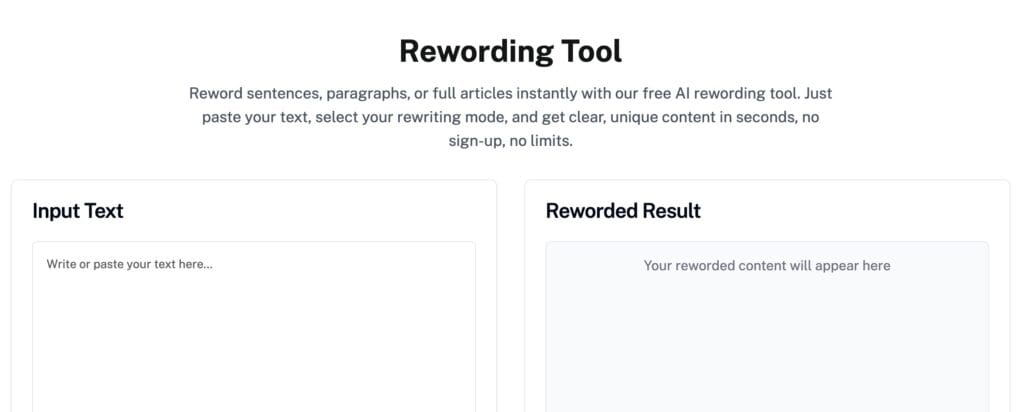
Just paste your draft and let it reshape your ideas clearly while keeping your original meaning intact.
Step 5: Read It Back and Fix What Feels Off
Once you’re done, read your summary. Does it make sense? Does it flow? Cut anything that feels clunky or unclear. Keep tightening until it reads smoothly.
That’s it. It’s a simple approach, and you can even use it to summarize an article.
Examples of Summaries
Sometimes the easiest way to understand how a summary should look is to see one.
Below are a few examples that show how a long piece of text can be condensed into a short version without losing its meaning.
1. Article Summary
Original (excerpt from a news article):
The government has introduced a new plan to cut down plastic waste.
From next year, single-use plastics will be banned in major cities. Businesses will also need to shift to biodegradable options.
This is part of a larger plan to manage climate change and pollution.
Summary:
The government plans to ban single-use plastics in major cities next year as part of its strategy to cut plastic waste and fight environmental pollution.
2. Book Summary
Original (novel):
To Kill a Mockingbird by Harper Lee follows the story of a young girl named Scout growing up in a racially divided Southern town.
Through her father, Atticus, a lawyer defending a Black man wrongly accused of a crime, Scout begins to understand the complexities of justice, prejudice, and moral courage.
Summary:
To Kill a Mockingbird tells the story of a girl learning about justice and racism in the American South through her father’s fight to defend an innocent man.
3. Academic Paper Summary
Original (research abstract):
The study looked at how remote work impacted productivity during the COVID-19 pandemic. Researchers gathered input from over 500 professionals in different fields.
They found that people working from home were slightly more productive, especially those who had flexible hours and a proper workspace at home.
Summary:
A study of 500 professionals concluded that remote work slightly boosted productivity, especially for those with flexible hours and proper work setups.
4. Executive Summary (Business Report)
Original:
A 20-page report on quarterly sales performance, market trends, and team productivity.
Summary:
Sales increased by 8% this month. Market trends show rising demand in the healthcare sector.
The sales team exceeded targets, though support staff reported workflow bottlenecks.
Access our trusted AI Detector and Humanizer using the widget below.
Final Thoughts
That was all. You learned both what is a summary and how to write one.
Summaries are weirdly underrated. We treat them like homework, but in reality, they’re one of the most useful skills you can have, especially in a world drowning in content.
If you can take a 3,000-word article, a 400-page book, or a two-hour meeting and boil it down to something clear and useful, you have a skill worth having, not just for school or work, but for life.
Because honestly, if you can’t summarize it, you probably didn’t understand it.
But don’t worry if you’re having trouble penning down a good summary initially.
The suite of AI tools by Undetectable AI are there to help.
Sign up now and get help writing a summary or just about anything.
